Pizza is my dietary Achilles heel. In fact, we have a bi-monthly pizza night at the Kummer household, despite the fact that all four members of the family follow an animal-based diet.
I’ve always assumed it was common knowledge that pizza is junk food. But recently, I’ve started noticing articles from reputable sources claiming that pizza is actually good for you (at least when made with relatively clean ingredients).
That argument is usually based on the idea that cheese is a good source of calcium and other nutrients, and, to a lesser extent, that whole grains are an important part of a “balanced diet.”
While it’s true that dairy has some health benefits, eating ultra-processed mozzarella cheese on a pizza is certainly not the best way to leverage them. And don’t even get me started on the alleged health benefits of “whole grain” foods.
Let’s be clear: pizza is an inherently unhealthy food that can be made somewhat healthier depending on its ingredients and preparation method. This is primarily because when made with wheat crust, it causes a massive spike in your blood glucose levels that can contribute to insulin resistance and weight gain.
It’s not going to kill you to eat it once in a while, but it’s also not something that should be consumed regularly if you’re trying to adhere to a healthy dietary framework.
This article will explain why pizza is unhealthy, using an example of my own blood glucose levels on a day that I ate it. I’ll also bust some of the myths surrounding this delicious junk food, and introduce you to a few healthier pizza alternatives that you can enjoy (more or less) guilt-free.
Why Pizza Is Unhealthy
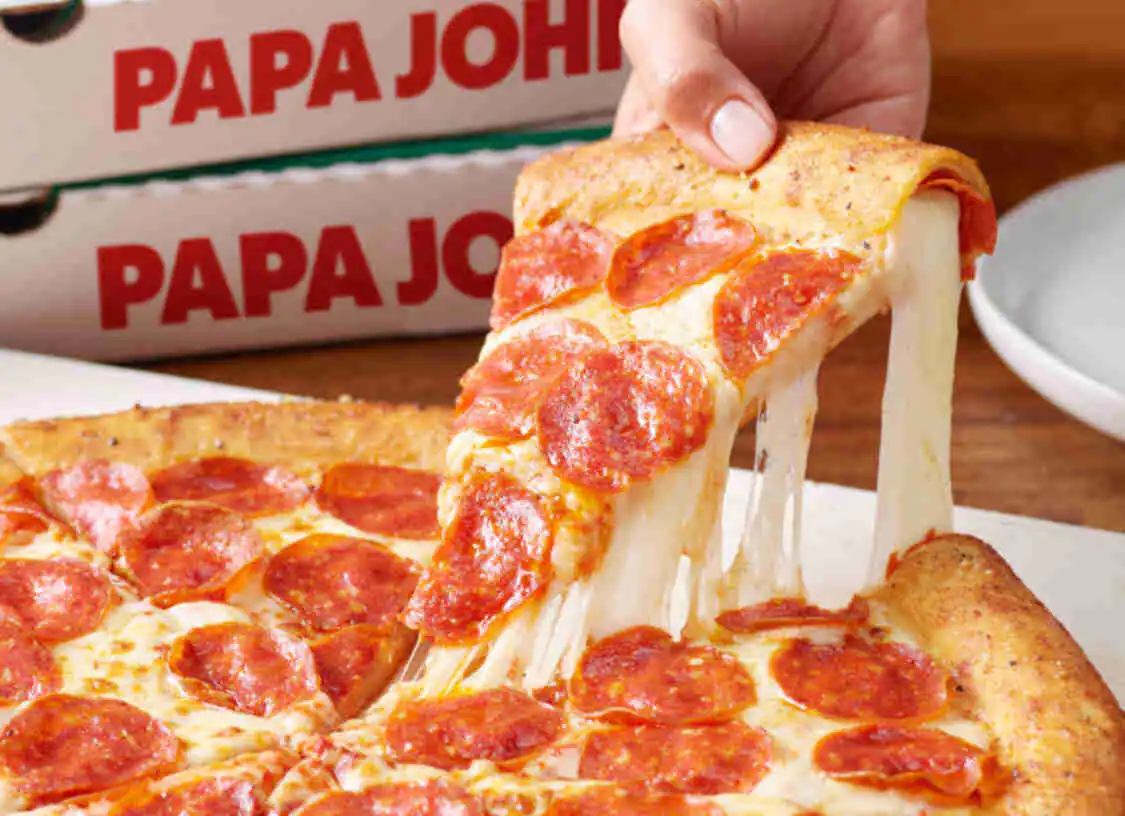
According to Papa John’s nutrition information, 70% of the macronutrient content in one of the chain’s cheese pizzas comes from carbohydrates (primarily from the crust). While I don’t think carbohydrates are evil, health problems arise when you consume heavily-processed carbs without much nutritional value, such as wheat flour.
Because of its enormous amount of carbs, eating pizza results in a massive insulin spike that shifts your pancreas and insulin production into overdrive.
You can see an example of this in the chart below, which shows my glucose levels (measured by a continuous glucose monitor) on a day that I consumed traditional crust pizza.
When glucose goes up, so does insulin, which removes glucose from the bloodstream to shuttle it into cells or back to the liver where it’s converted to fat.
Intense exercise also causes a spike in glucose (and insulin) to make fuel available to muscle tissue, and the chart below shows a massive spike corresponding with my CrossFit workout that day (as well as with some honey consumption). Both spikes were sharp but short-lived.
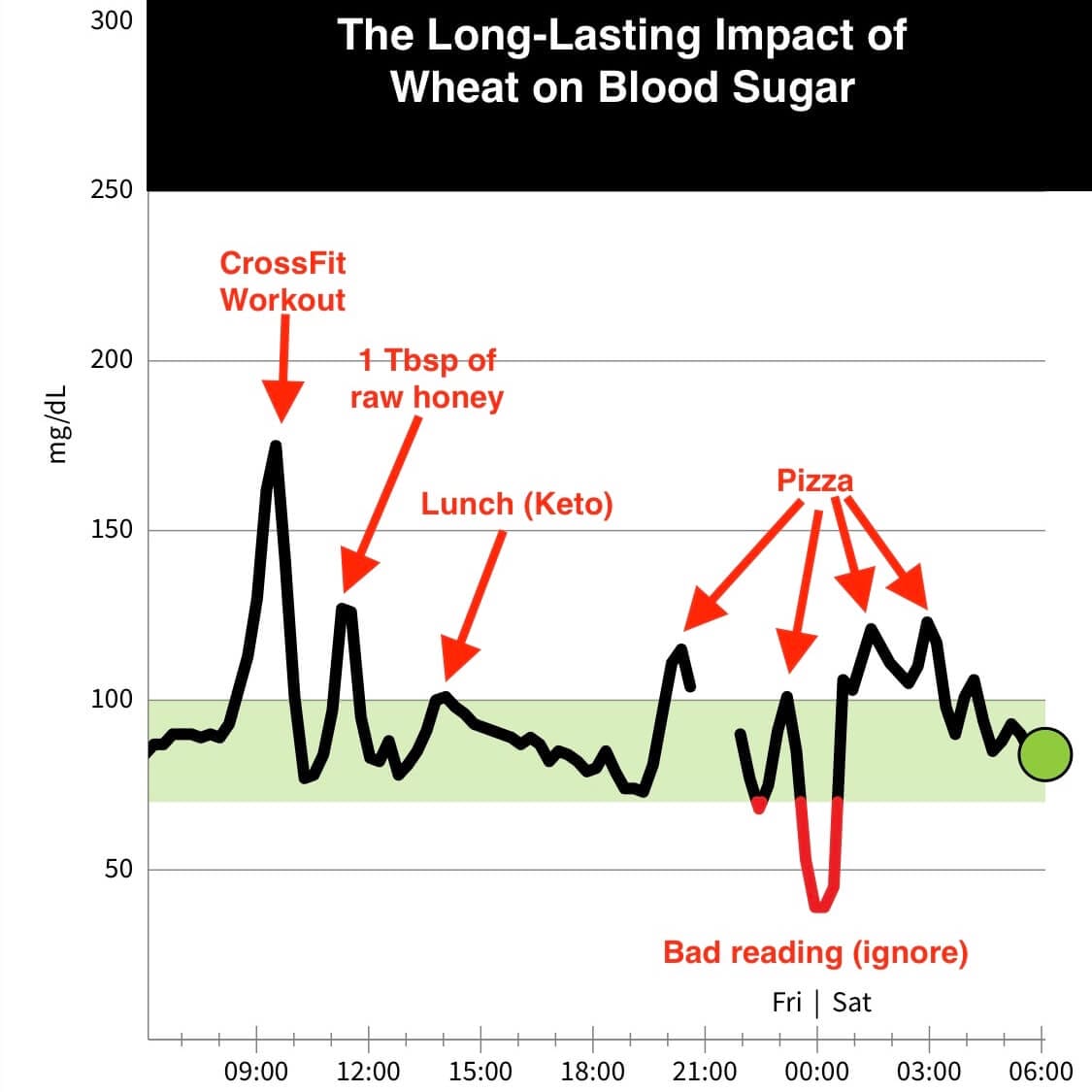
Exercise-induced blood sugar spikes are particularly benign because the cells in your muscle tissue metabolize the glucose molecules immediately and use them for energy.
In the example above, eating pizza caused a dumpster fire of glucose (and insulin) spikes that taxed my pancreas for hours at a time when my body’s energy demands were relatively low (i.e., overnight while I was sleeping).
Unhealthy Ingredients In Pizza
Pizza almost always contains three inflammatory ingredients that can have serious health implications:
- Wheat flour, which (surprisingly to some people) makes your blood sugar spike even faster than table sugar. Additionally, wheat flour attaches to some of the same receptors as opioids, causing an addictive reaction that makes you crave even more carbs.
- Seed oils, including soybean and sunflower oil, which are manufactured using high heat or harsh chemicals that destroy the delicate molecular structures of their fatty acids, rendering them inflammatory.
- Processed sugar, which has zero nutritional value but is one of the reasons so many Americans are overweight.
Additionally, most pizza includes inflammatory fillers such as modified food starch, cellulose, and preservatives such as wheat starch. Let’s take a deeper dive into why these ingredients are problematic.
Wheat Flour (Crust)

Humans didn’t consume significant amounts of wheat until about 10,000 years ago, when we started farming and domesticating animals. That’s a very short timeframe in the context of 2.6 million years of evolution.
Before 10,000 years ago, we only had sporadic access to wild-growing grains, and the amounts we consumed were nowhere near what they are today.
As a result, our bodies aren’t set up to properly metabolize the specific carbohydrate molecules and proteins in grains.
Wheat in particular contains highly inflammatory proteins (such as gluten), which attach to some of the same receptors as opioids. In other words, it triggers cravings (in this case, for more carbs). Anecdotally, when I start eating pizza, I can’t stop until the last piece is gone.
Of course, wheat is also loaded with carbohydrates. As noted earlier, that makes your blood sugar spike without offering much nutritional value in the form of micronutrients.
The main issue with regularly consuming processed carbs is that doing so promotes insulin resistance, which is one of the underlying factors in most chronic diseases, including cognitive disorders such as Alzheimer’s, but also cancer, diabetes, and cardiovascular disease (to name a few).
Fermenting wheat can mitigate some of the issues associated with gluten and carbs because it helps break down and hydrolyze gluten proteins, making them less inflammatory. Additionally, fermentation alters the bioavailability of starches while increasing carbohydrate complexity (reducing the glycemic index) and decreasing the phytate levels in flour.
Phytates are an antinutrient that reduces mineral absorption in the gut. As a result, fermented wheat flour (sourdough) is more nutritious than crust made with a yeast-based dough.
Aside from processed carbohydrates, industrial seed oils (aka vegetable oils) are the second major factor in increasing your risk for developing chronic inflammation and metabolic disease. Unfortunately, those so-called vegetable oils are prevalent in pizza crusts and sauces.
Seed Oils (Crust and Sauce)
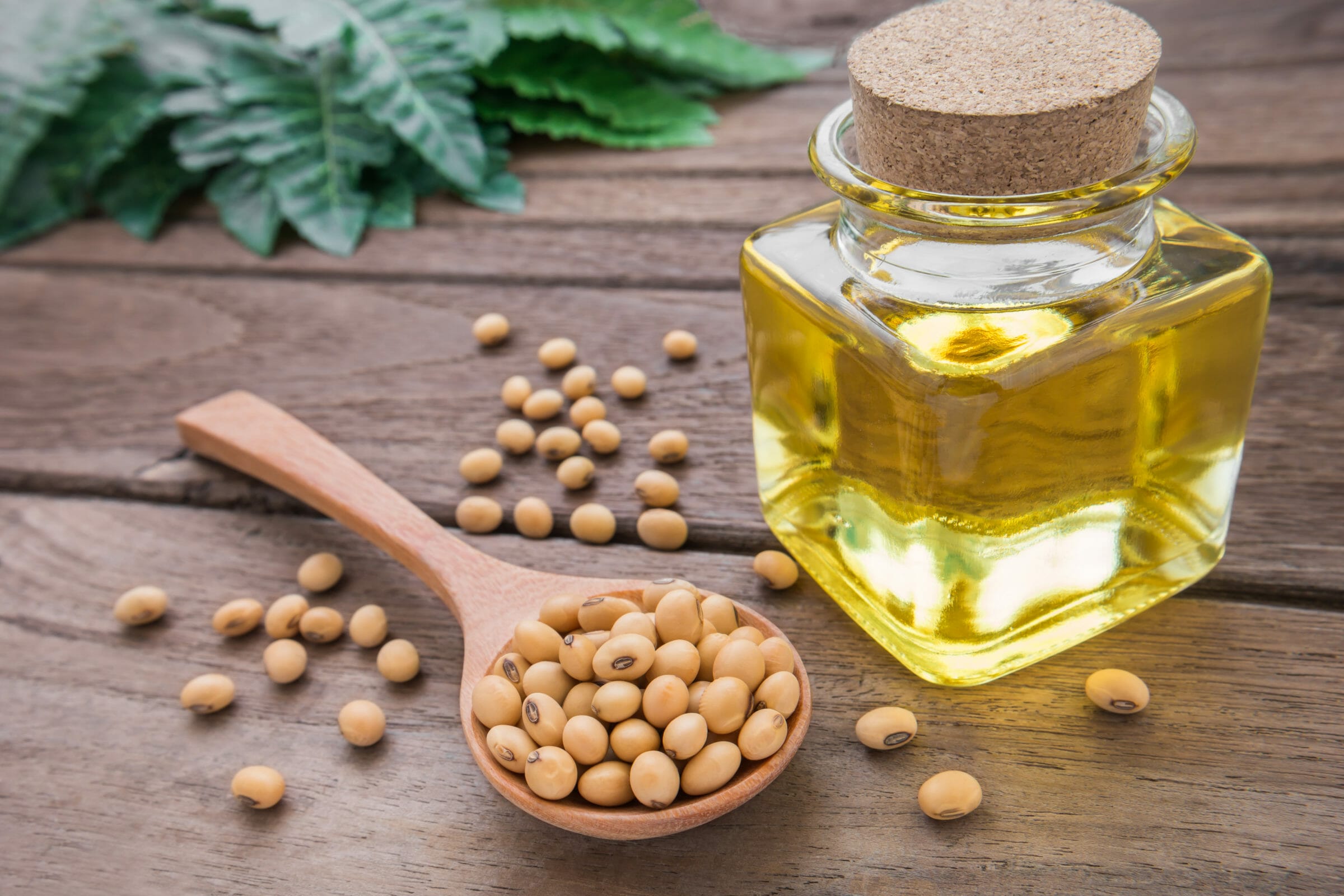
It’s difficult to extract oil from seeds, so most seed oils are manufactured using high heat and/or harsh chemicals. The problem is that these production processes damage fatty acids at the molecular level, making them inflammatory.
For example, consuming oxidized polyunsaturated fatty acids from vegetable oils can promote oxidative stress (i.e., damage to cell walls, DNA, proteins and lipids) and activate various inflammatory pathways, contributing to the development and exacerbation of inflammatory conditions and diseases, including cardiovascular diseases, diabetes, and others.
One study published in the Journal of Lipid Research in 2012 concluded that even consuming supposedly “heart healthy” omega-3 fats triggers oxidative stress and inflammation in the upper intestine if they’ve become oxidized. That’s because all polyunsaturated fatty acids are “highly prone to oxidation,” the authors suggested.
Unfortunately, most seed oils contain high amounts of omega-6 and are prone to oxidation due to the heat involved during the manufacturing process, as well as from exposure to heat, light and air during manufacturing, storage and transport.
That’s a big problem since the pizza dough offered by most major brands is made from cheap and unhealthy oils (for what I assume are cost-saving reasons). Many companies also use seed oil in their pizza sauce (sometimes alongside extra-virgin olive oil).
Processed Sugar (Crust, Sauce, and Certain Toppings)
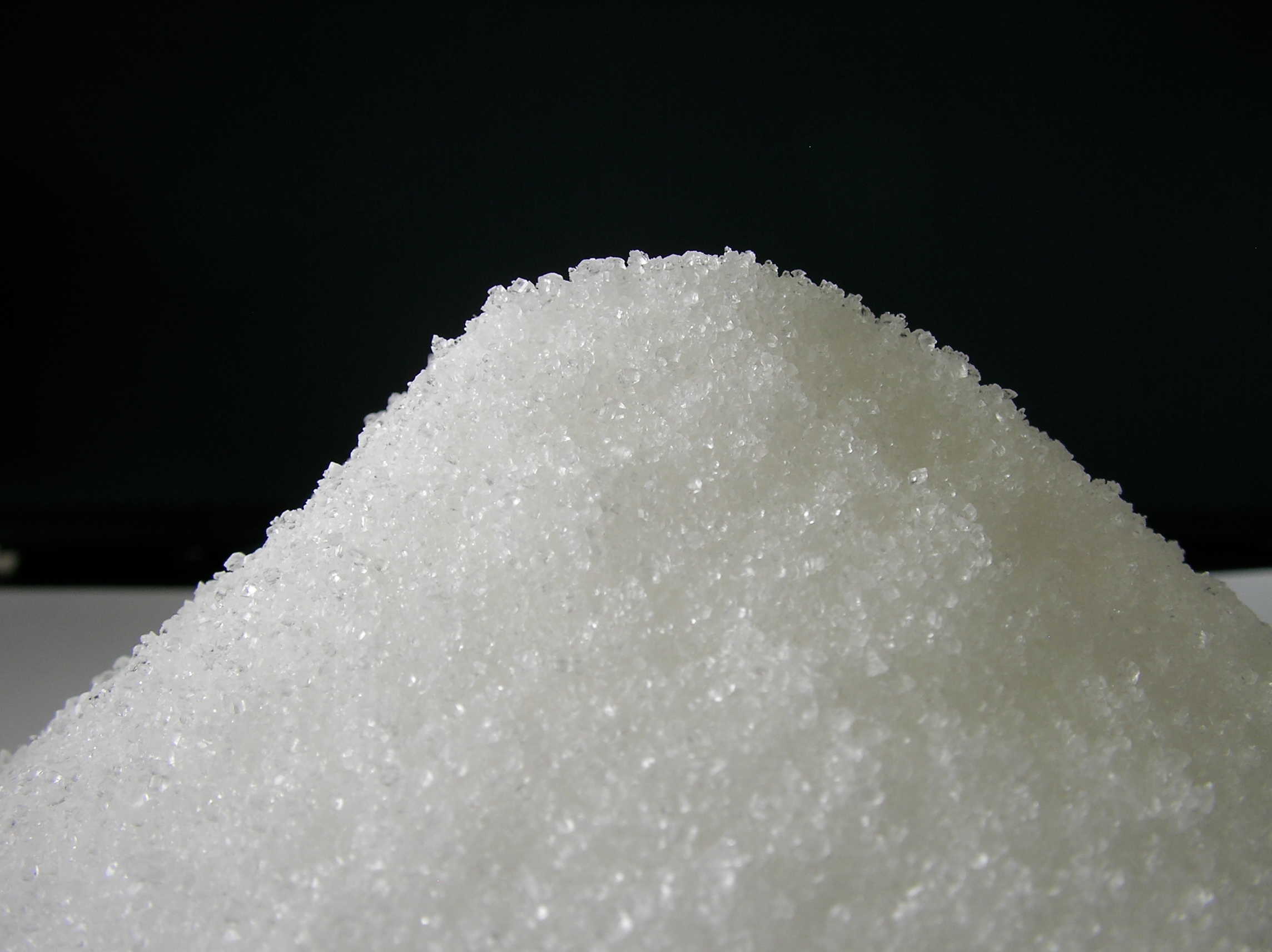
Processed sugar, particularly in high quantities, poses significant health risks and is a major contributor to the development of metabolic diseases, including Type 2 diabetes.
When consumed, processed sugar leads to rapid spikes in blood glucose levels.
The body responds by releasing insulin to help cells absorb this glucose for energy. However, excessive intake of sugar can lead to insulin resistance, a condition where cells become less responsive to insulin. Over time, insulin resistance can escalate into Type 2 diabetes, as the pancreas struggles to produce enough insulin to manage blood sugar levels effectively.
Insulin resistance is one of the key factors in developing other metabolic diseases, including Alzheimer’s, dementia, cancer and cardiovascular disease.
The bottom line is that processed sugar is high in calories but low in nutritional value, promoting weight gain and fat accumulation, particularly around the abdomen. This visceral fat further exacerbates insulin resistance and the risk of developing metabolic diseases.
How to Make Pizza Healthier

My opinion is that you should only eat pizza in moderation. However, there are a few steps you can take to make pizza a little bit healthier:
- Make your pizza at home using fresh ingredients. My wife double-ferments sourdough for the crust, and we use only organic tomato sauce, raw cheese and uncured salami as toppings.
- Choose pizza from authentic Italian restaurants. Authentic pizza is made with extra-virgin olive oil and high-quality mozzarella cheese (or comparable cheeses).
- Choose pizza made with grain alternatives. I recommend sticking with cauliflower crusts instead of almond flour crusts, because nuts are inflammatory, thanks to their relatively high concentrations of linoleic acid (a polyunsaturated fatty acid) and their natural defense chemicals (including antinutrients).
Here’s a bit more context on why each of these is a healthier choice than regular pizza.
1. Make Fermented-Grain Crust Pizza at Home

Handmade pizza, crafted with imported ingredients, isn’t cheap. You might even end up paying in excess of $20 for a single pie. That adds up quickly if you want to feed a large family, or a group of kids at a birthday party.
It might be cheaper and more fun to make your own pizza from scratch. More importantly, doing so will give you full control over the ingredients.
For the bi-monthly pizza night at the Kummer house, we use double-fermented sourdough crust made with organic unbleached wheat flour, organic extra-virgin olive oil, filtered water and sourdough starter.
- The use of organic flour ensures that we don’t expose our bodies to synthetic pesticides, herbicides (e.g., glyphosate) or the chemicals that are often used for growing grains.
- Using double-fermented sourdough instead of yeast has several benefits, including the breakdown of gluten and other antinutrients, increased bioavailability of micronutrients, and a reduced glycemic index of the crust. The latter helps improve the body’s blood sugar response, mitigating some of the concerns outlined in this article.
This type of crust, topped with organic tomato sauce that’s free of sugar and seed oils, high-quality mozzarella, and uncured salami or soppressata, makes for a relatively healthy meal (at least compared to regular pizza).
As an added benefit, it’s fun preparing your own food and you can even turn it into a family affair involving the kids. Our kids love decorating their own pizzas, and they’re typically less picky with toppings they put on themselves.
2. Pizza From Authentic Italian Restaurants
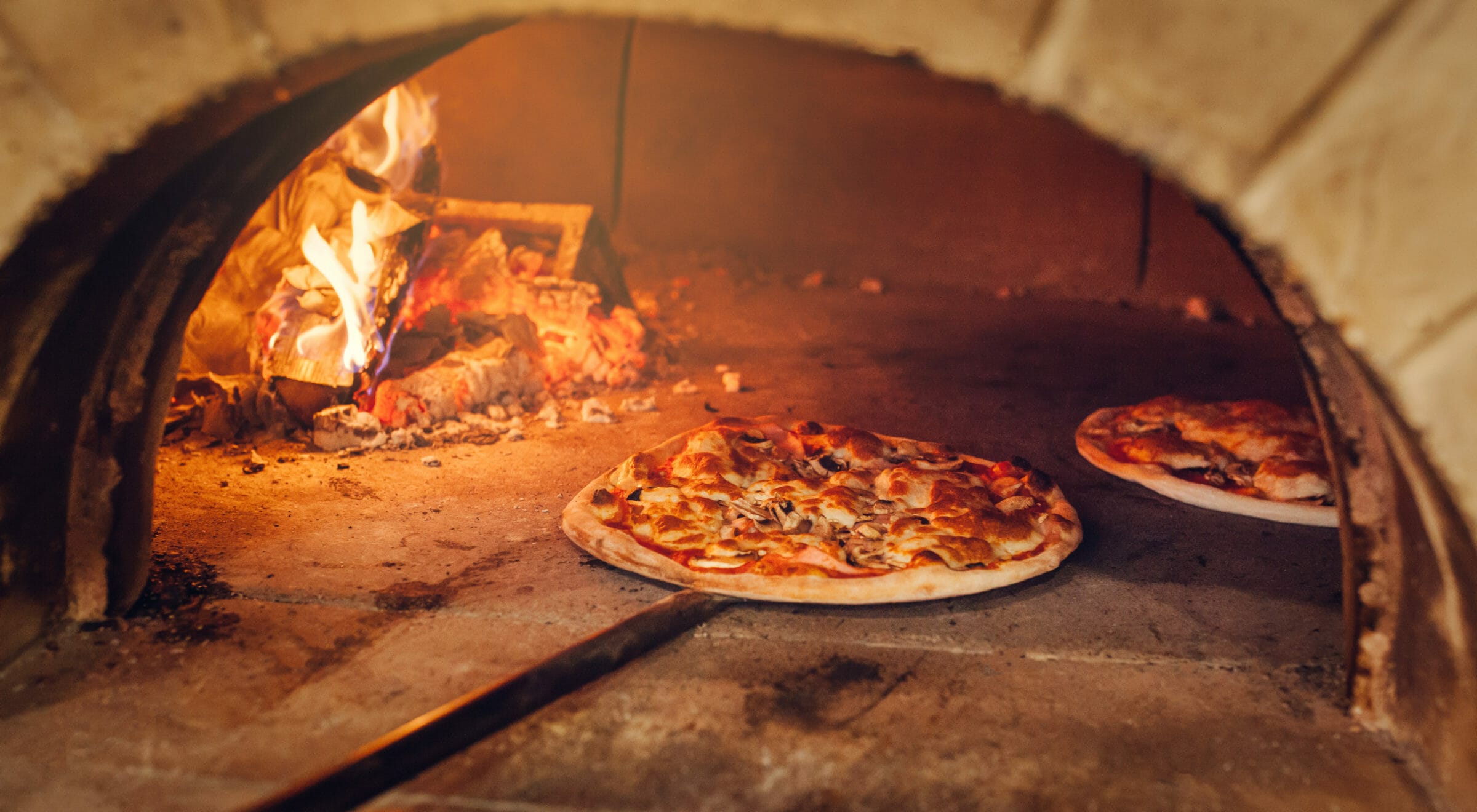
We live near Atlanta, Georgia, and we have two authentic Italian (Neapolitanian) restaurants nearby that make their pizza dough from scratch every day, using a few ingredients they import directly from Italy.
For example, Campania (one of our favorite pizzerias) makes their dough from “00” flour, natural yeast, and sea salt. They don’t add any crappy vegetable or seed oils, nor do they add any other “flavor enhancements.”
The same goes for their homemade tomato sauce and the cheese (“Mozzarella di Bufala,” or buffalo mozzarella).
In other words, you won’t find any inflammatory ingredients in these types of pizzas. So the only thing to worry about is the wheat flour and the carbs.
If you have to have regular pizza on occasion, I recommend spending a few extra dollars and buying it from a traditional pizzeria as opposed to a pizza chain.
3. Buy or Make Grain-Free Pizza Crust
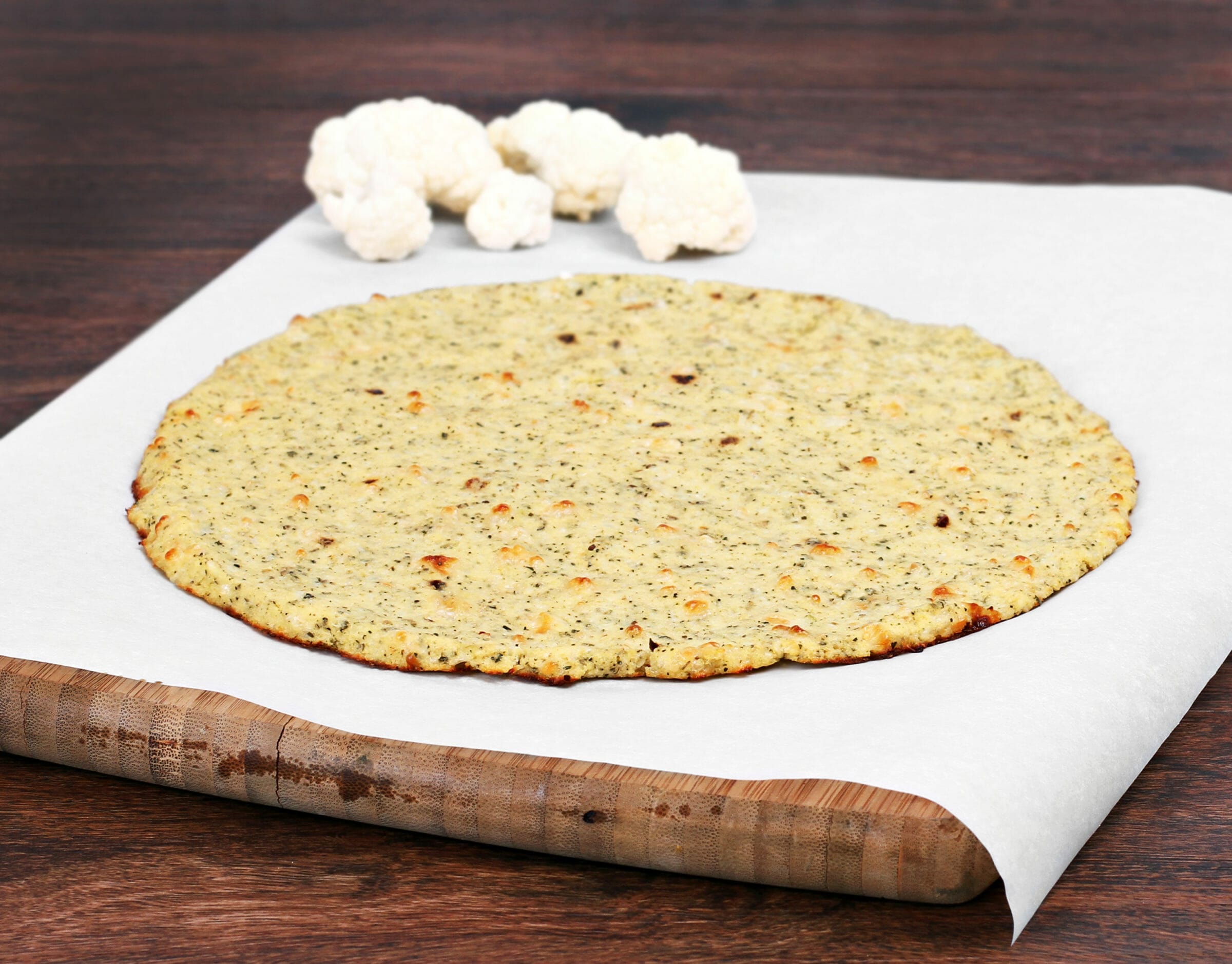
To significantly reduce the amount of carbs in pizza, you have to get rid of the wheat in the crust. There’s no way around that.
Arguably the healthiest alternative to wheat flour for pizza crust is riced cauliflower combined with eggs and a nominal amount of nut flour (which helps bind the ingredients together).
The advantages of cauliflower are that it doesn’t have any gluten and it’s low in carbohydrates. In fact, you can enjoy cauliflower crust pizza even if you follow a ketogenic diet.
At the same time, it’s worth noting that cauliflower crust pizza isn’t completely benign.
Cauliflower contains moderate amounts of oxalates, an antinutrient that can cause inflammation and kidney stones. In fact, a 2018 study published in the American Journal of Physiology-Renal Physiology recommends avoiding oxalate-rich foods to prevent the formation of kidney stones.
A few years ago, we used to make cauliflower pizza crust at home, but it was always hit or miss. If you make it too thick, it won’t get crispy. And if you make it too thin, it’ll tear and won’t hold the sauce and toppings.
That’s why we ended up purchasing cauliflower pizza crusts from Cali’flour – a brand that has since gone out of business. The good news is there are now other brands on the market, such as Kbosh, that offer cauliflower crust pizza with reasonably healthy ingredients.
As far as taste and texture is concerned, cauliflower crust pizza isn’t the same as regular pizza but it can be delicious in its own way. In fact, I considered the crusts from Cali’flour (when baked crispy enough) to be as “addictive” as regular pizza crust.
From a nutritional perspective, cauliflower crust has significantly fewer calories (especially from carbs) than wheat crust pizza. From the perspective of vitamins and minerals, neither is a great source of micronutrients.
Frequently Asked Questions
Whole wheat products have more fiber, which may slow down the conversion of carbs into glucose. But a slice of whole wheat bread still raises your blood sugar faster than plain table sugar. Plus, whole wheat flour contains significantly more antinutrients (which are typically found in the grain’s hull) than white flour.
In other words, you can’t get around pizza’s overall unhealthiness by seeking out or making whole-grain crust.
My pick for the least-healthy type of pizza would be deep dish (such as Chicago and Detroit style), because it has even more grain-based crust to spike your blood glucose levels.
But a close second would be any type of fast food pizza, such as the kind you’d get from Pizza Hut, Papa John’s or Domino’s. Fast food pizza is made from cheap, low-quality ingredients and has no redeeming qualities. It’s pure junk food.
Lastly, I should also mention frozen pizzas, which, in addition to grains, low-quality seed oils and added sugar, also often contain unhealthy preservatives.
While a single slice of pizza from any of the above categories isn’t going to send you into an unescapable downward health spiral, these types of pizza should not be considered even a small part of a healthy diet.
I recommend avoiding toppings that contain inflammatory compounds, such as antinutrients, phytoestrogens, linoleic acid (a type of polyunsaturated fatty acid) and synthetic pesticides. That includes many traditionally cured meats (e.g., pork salami and pepperoni), chicken, spinach, kale and peppers.
Instead, I’d stick with uncured meats from responsibly raised animals (like pastured bacon and beef salami), anchovies, olives, and fruits and veggies from the “clean fifteen” list, including onions (if your gut agrees with them), pineapple and mushrooms.
I keep it simple and stick with uncured salami (beef salami when available) and raw cheese.
Regular pizza is the opposite of paleo-friendly because of the wheat flour crust, the vegetable oils in the crust and sauce, and the cheese. To make pizza paleo-friendly, you would have to substitute a paleo-friendly grain alternative (such as riced cauliflower) for the wheat, and (technically) omit the cheese.
Regular pizza is not keto-friendly because of the carbs in the crust. But if you substitute wheat flour for riced cauliflower, you can eat it while on a ketogenic or low-carb lifestyle.
Final Thoughts: Pizza Is Not Healthy, But I Still (Occasionally) Eat It
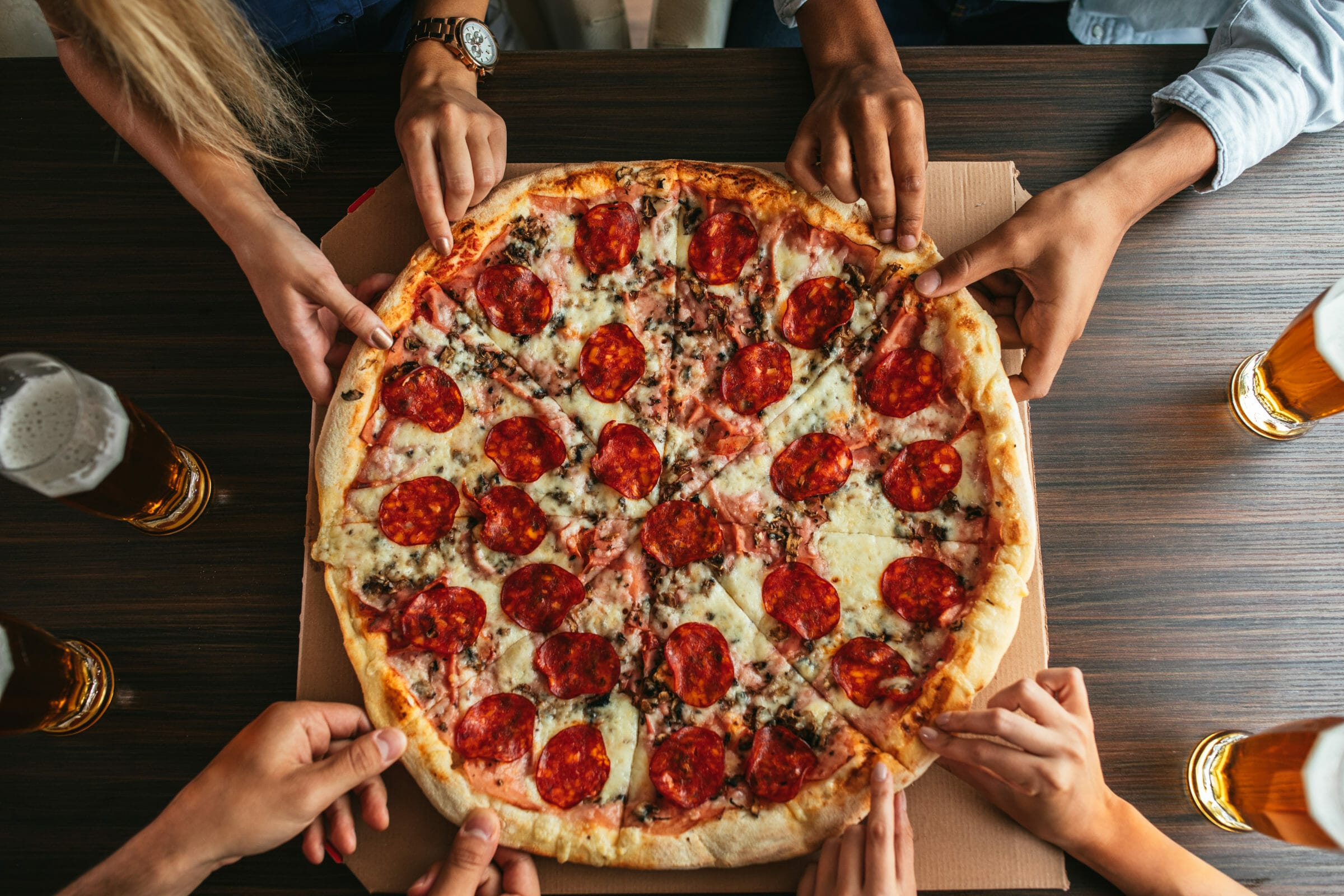
I hope this article has helped you understand why most traditional pizza isn’t healthy, despite claims from an alarming number of registered dietitians and nutritionists that (whole) wheat products are an excellent and necessary source of vitamins and minerals.
That position is frankly ridiculous and lacks any scientific basis.
Still, I would not argue that you should never eat pizza again. We have regular homemade pizza once in a while, and we sometimes buy traditional (Neapolitan-style) pizza from local pizzerias here in the Atlanta area.
Needless to say, we enjoy the heck out of that occasional feast!
My wife also maintains a jar of sourdough mother. That way, we can have family pizza nights more frequently without so seriously compromising our health.

Michael is a healthy living enthusiast and CrossFit athlete whose goal is to help people achieve optimal health by bridging the gap between ancestral living and the demands of modern society.
Medical Disclaimer
The information shared on this blog is for educational purposes only, is not a substitute for the advice of medical doctors or registered dieticians (which we are not) and should not be used to prevent, diagnose, or treat any condition. Consult with a physician before starting a fitness regimen, adding supplements to your diet, or making other changes that may affect your medications, treatment plan or overall health. MichaelKummer.com and its owner MK Media Group, LLC are not liable for how you use and implement the information shared here, which is based on the opinions of the authors formed after engaging in personal use and research. We recommend products, services, or programs and are sometimes compensated for doing so as affiliates. Please read our Terms and Conditions for further information, including our privacy policy.
still wont stop me from eating it, though!
Haha…as long as you make a conscious decision :)